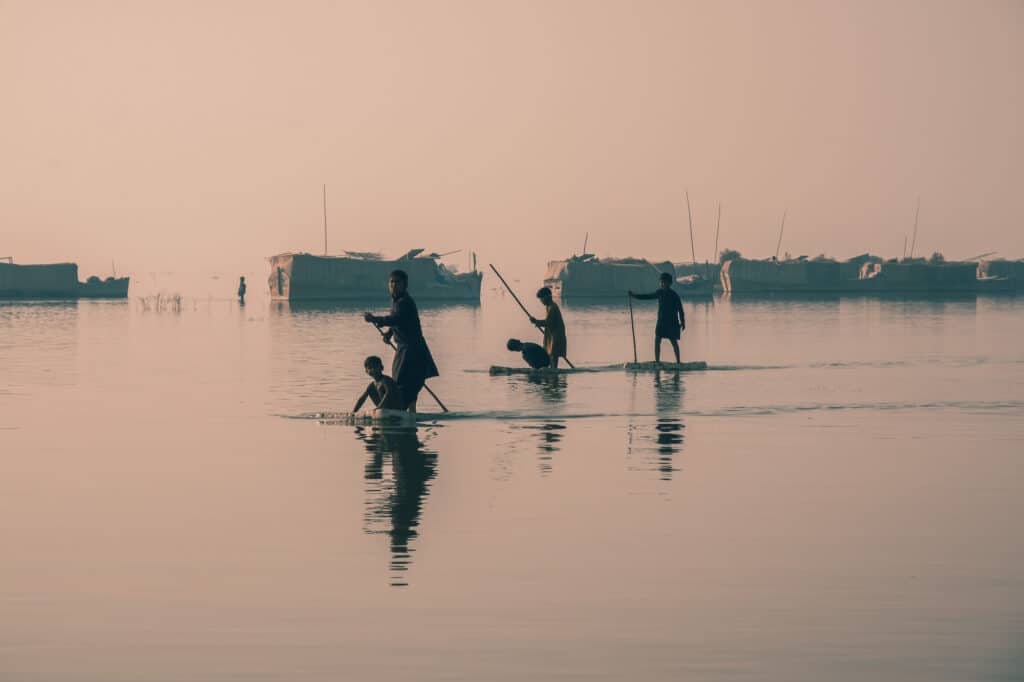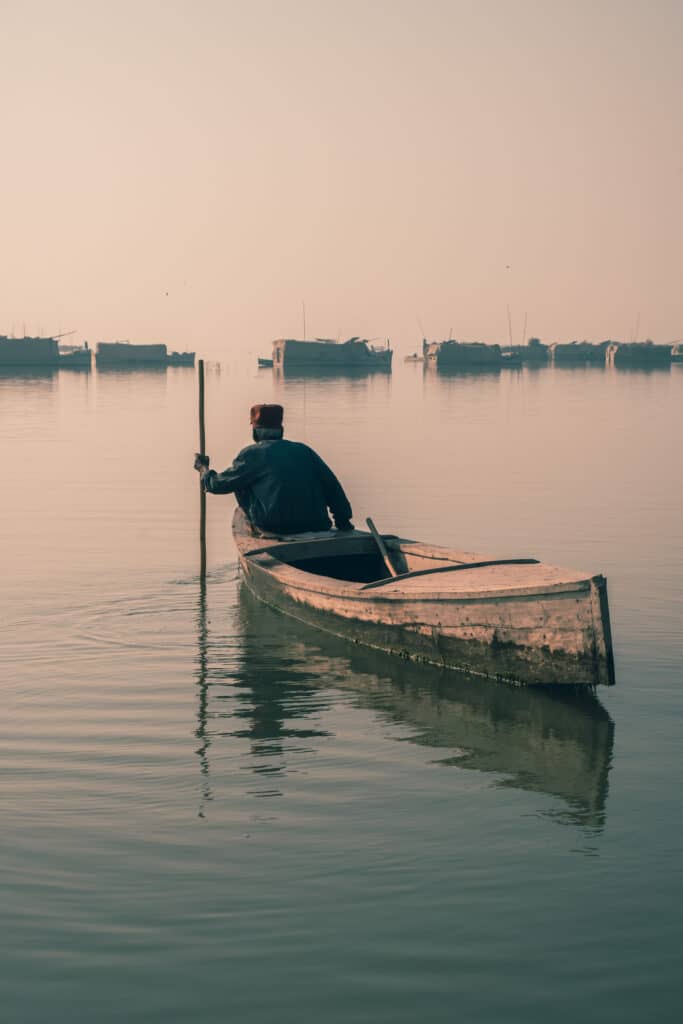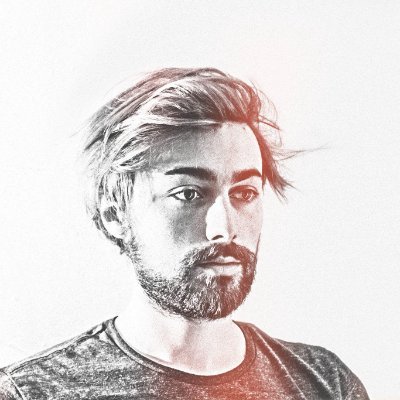Arriving at the Benazir Bhutto airport in Islamabad, I feel like I’ve stepped into tribal territory. A crowd of men dressed in traditional outfits—shalwar kameez, pakol caps, and large wrap-around shawls—appear in front of me. Their elegance and fine features often come with a beautiful clean-cut mustache and a piercing gaze underlined by kohl.
I stay in the capital for only three days, enough to get organized and visit national monuments, especially the great Mosque of Faisal. I take pictures of people after the Salat Maghrib (end-of-day) prayer. I am amazed by the city that Western fiction often depicts as teeming, old, and dusty, which turns out to be the opposite: calm, green, and airy. I spend my last day in the green hills with their remarkable city views. The Margalla Hills National Park, the highest point in the area, is where families from Islamabad come for a stroll with their children. I catch the eye of a balloon seller who has just made a deal. With a big smile, I show him my camera, asking for his approval. He smiles back at me and I immortalize him with my very first portrait.
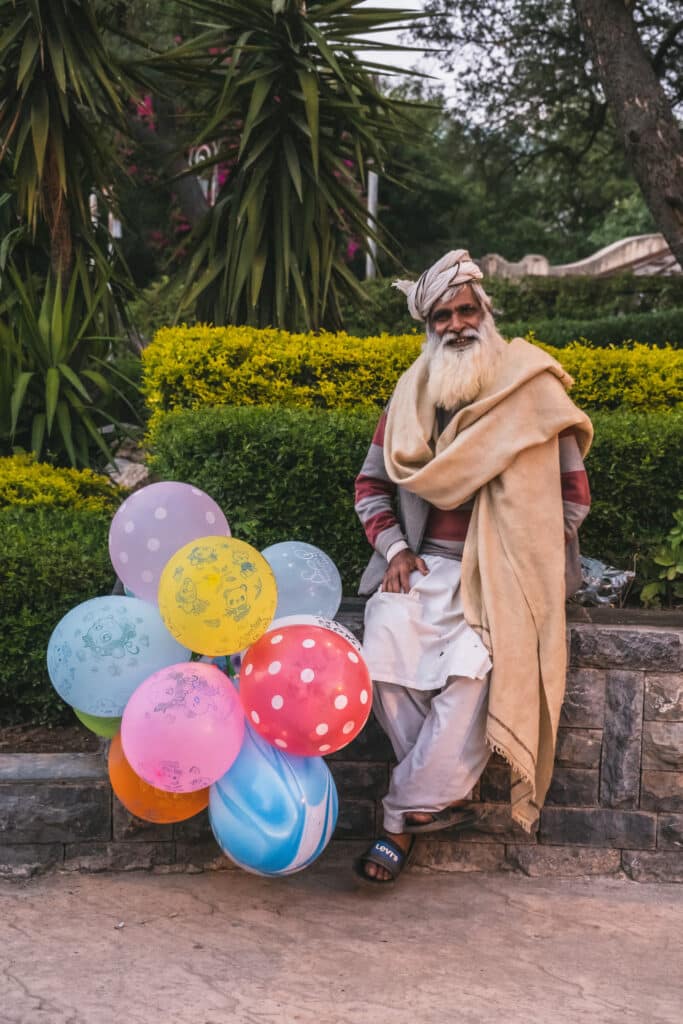
I then leave the big city and explore the mountains of the Northern region of Gilgit-Baltistan. My journey starts from the bus station in Rawalpindi, Islamabad’s sister town, a real Pakistani city: authentic, bustling, and chaotic. It is midnight, and I’m in a car in dubious mechanical condition, stuffed up to the ceiling with four strangers for an indefinite amount of time. Loud Bollywood music plays in our ears as we drive towards the famous Karakoram Highway. The road is known as one of the most dangerous roads in the world, probably similar to the trade routes Marco Polo took in yesteryear. The trail is stressful. We literally drive the whole way on the edge of the mountain, on a track dug into the rock, with a dizzying void on my left side. My companions try to make the journey more comfortable, offering me chai, biryani, and samosas. They won’t let me pay for anything, insisting: “You are our guest. Welcome to Pakistan.”
After 20 hours of an epic journey in the Karakoram range, I finally arrive in Gilgit, the namesake city of the region, surrounded by sharp mountain peaks, which will be my base camp. I organize most of my expeditions in the neighboring valleys from there. I walk along the river that runs through the town. On the river banks, I see several riders training their horses for a local polo competition. I wait for them to finish the training session before approaching them. I take pictures of a man bathing his horse in the river. Both look exhausted as I capture their moment of rest and quiet, with my subject giving me a look of tacit approval.
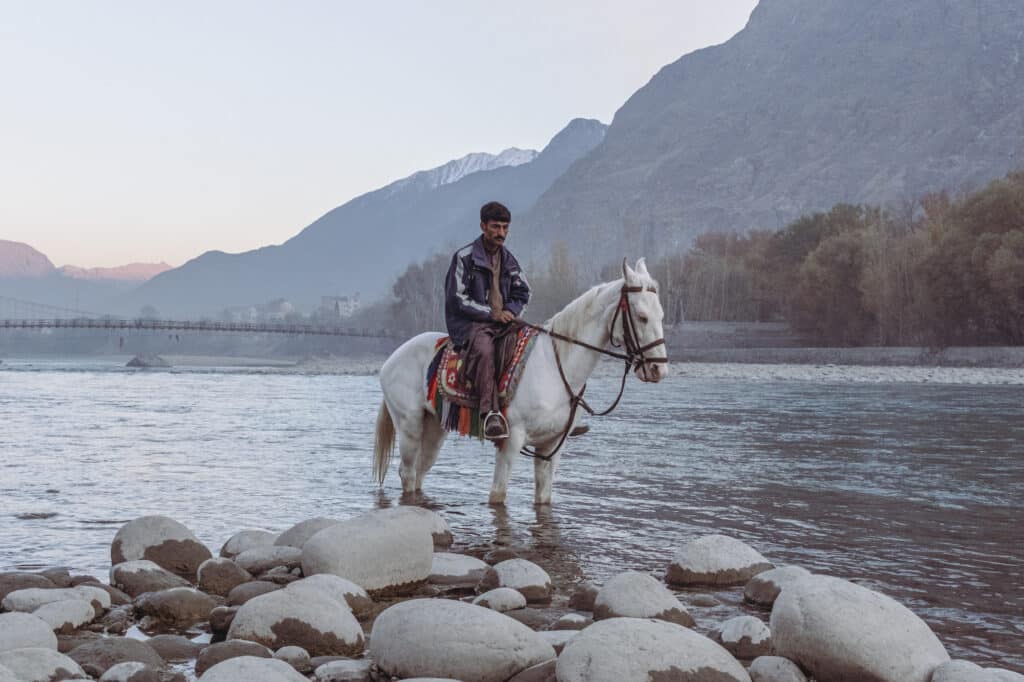
I later decide to go to the country’s northern end to meet the Wakhi people, famous for their hospitality and longevity due to mountain life. Getting there is complicated; it takes me several days in a shared Jeep. As we go higher, the temperature falls considerably and the tracks freeze. The Wakhi’s reputed hospitality is spot on. The people I encounter on the way all invite me to share chai and chapatis with goat milk butter, which unfortunately gives me severe food poisoning that same night. I shiver, alone in my isolated hostel at an altitude of 3500m. It is -15° in my room, temperatures my equipment has never experienced. My lodgings are spartan; no water, electricity, or wood. I collect dried yak dung from outside to use as fuel and regain some strength. A woman from the village brings me small branches of wood, some food, and water from the river. The next day I leave with a weak stomach.
After three days of roaming in the valley, I finally arrive in Zood Khun, the last village at the northern limit of Chapursan. Alam Jam, the innkeeper, advises me to visit the sanctuary of Babah Ghundi, a Sufi saint, at the end of the valley at the crossroad of the three mountain ranges of the Karakoram, Hindu Kush, and Pamir. I get on a bike with Hafiz, a friend of my hosteler. The track is hardly passable; we make our way as best we can through frozen rocks and waterways. In Yshkuk, I am stunned by the spectacle presented before my eyes.
In the small stream-filled valley full of polished rocks, I spot many wild yaks and berry-filled junipers. Hafiz approaches one of the yaks, seemingly an alpha male, and caresses the tip of its nose. They both turn their heads toward my lens as I take out my camera. I treasure the moment as a gift of the circumstances.
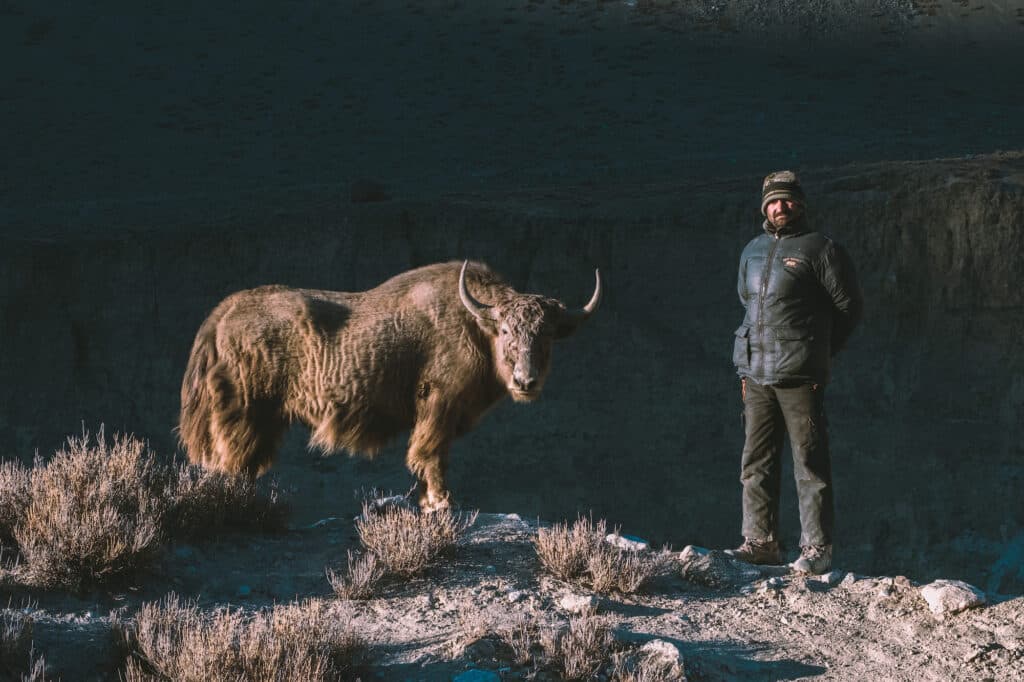
A few days later, I leave the Chapursan valley. It takes me three days of arduous crossing on snowy tracks via the Shandur pass to reach the three valleys where the Kalash people live near the Afghan border. With their unique culture, these people are known as the country’s last pagan and animist community. Legend has it that they are the descendants of the troops of Alexander the Great, the ones that deserted during the Indian campaigns and found refuge in these mountains. That myth justifies the fact that the Kalash are a distinct ethnic group within Pakistan, with white skin, sometimes light hair, and often translucent eyes.
Walking in the small, picturesque village of Karakal in the Bamburet valley, I notice a crowd in one of the village squares. A disemboweled buffalo is lying on the ground with its guts spilling out. The violent strike of an older man’s axe into the animal’s chest comes with a surge of blood. They are sacrificing the animal in honor of the goddess Dizaw. I spend the afternoon with them, surrounded by the young participants of the event. My eyes meet those of a little girl with piercing, transparent blue eyes. Some play with the animal’s remains, while others observe the dismemberment of the beast. In the evening, in the light of a fire set up to warm and feed us, the women sing melancholic tunes. We stay until the early morning, bathed in the mystical atmosphere.
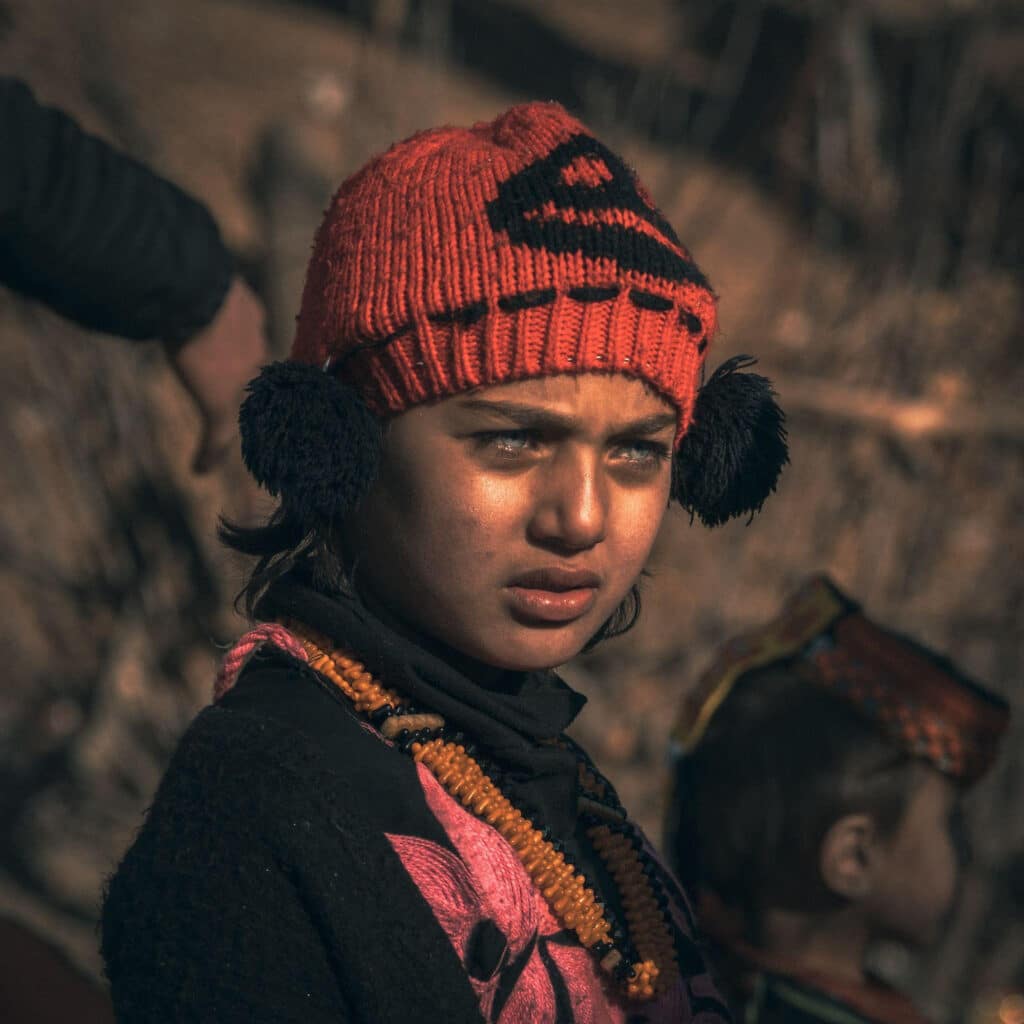
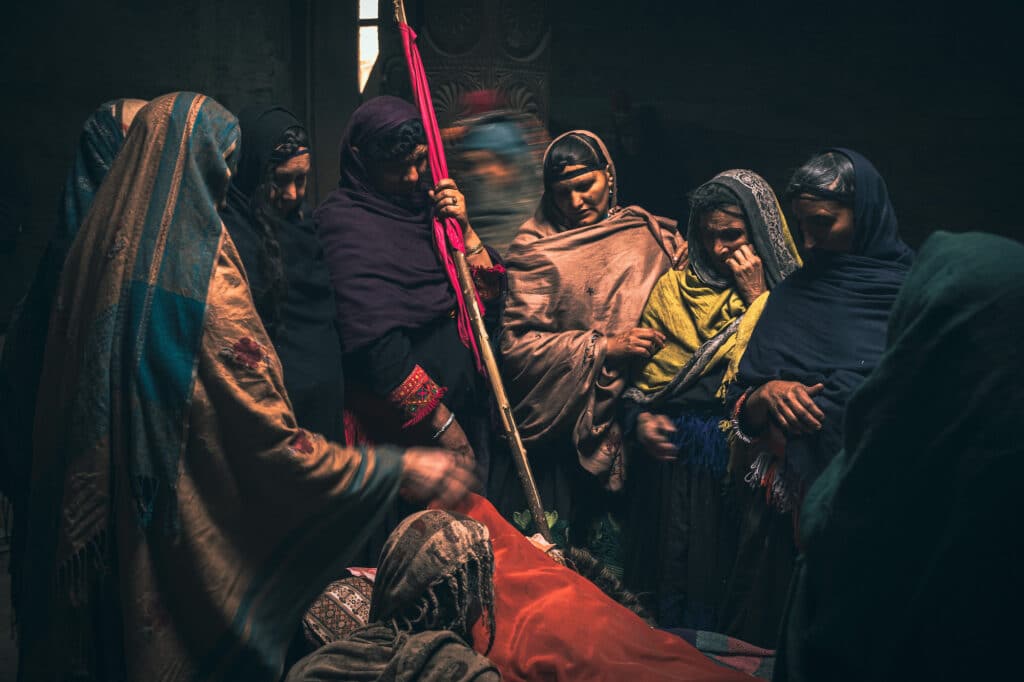
The next day I go to explore Rumbur, another Kalash valley. Once there, I find out that a villager has died, and I decide to go to his funeral. A big crowd is already gathered around the shrine; the atmosphere is spiritually charged. Inside the holy site, an intense light cuts through the ceiling of an opening designed to evacuate the smoke from the pyres burning in the room’s four corners. The deceased’s body is placed in the center of the room, covered with red velvet and illuminated by the unique source of divine light. The women sing heartfelt requiems around the body in unison as they swing, while the assembly dances around in a state of trance. I stay there for three days and two nights to celebrate the man’s life to the rhythm of funeral chants and drums in a thick, smoky atmosphere.
I only go to bed on the last night of the ceremony, around 5 AM. Six hours later, I am awakened by a violent earthquake. A noisy rumbling sign, perhaps, that the dead man has indeed reached his destination. The shot of adrenaline tells me it’s time to move. I hug my companions and head for Chitral, the region’s big city, to take a bus to Peshawar.
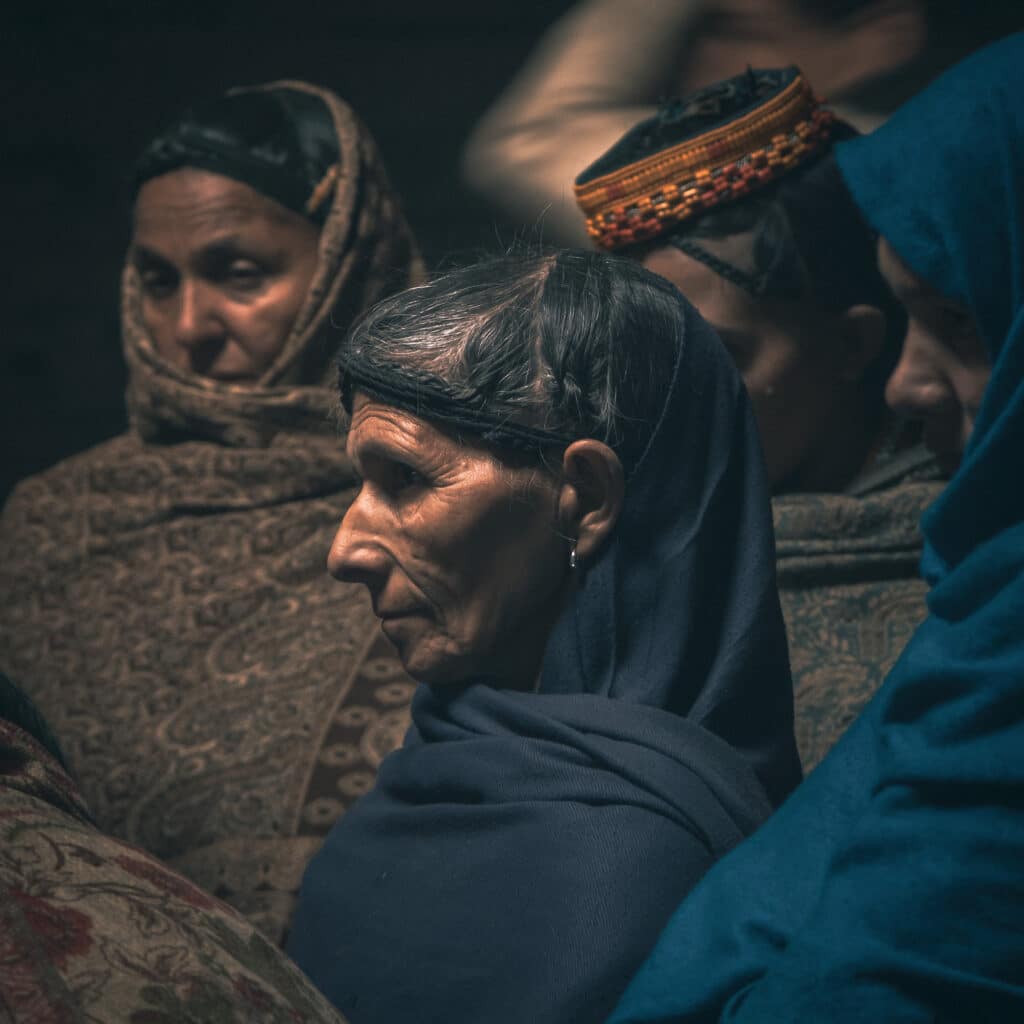
Bathed in history, at the crossroads of many invasions by foreign powers, Peshawar is a bustling city that takes you back in time. The millennial city’s narrow, winding streets sometimes hint at the crumbling remains of the Mughal, Sikh, and British empires. A true gunpowder magazine, this martyr city, close to the former Federally Administrated Tribal Areas (FATA) and a rear base for terrorist groups, has been a regular victim of the latter for many years. The presence of a rigorous Islam is felt everywhere in this amazing Pashtun city. Many of the women I see camouflage themselves under large ocher veils that cover every bit of flesh and the eyes. In the pouring rain, I pass a group of men sheltered by a large umbrella that leaves little room for women. One woman, standing without protection from the bad weather, is holding her husband’s motorcycle, serving as the pole to which the vehicle is harnessed. I discreetly capture the moment with my camera to testify to this other reality.
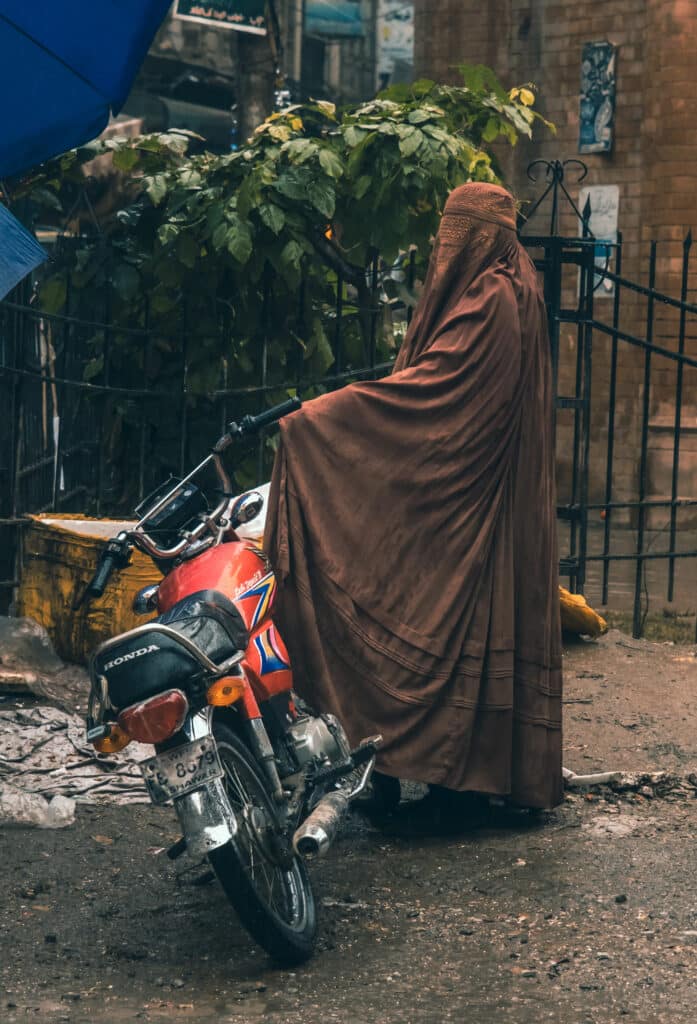
I later take refuge in the alleys of a bazaar covered by sheets to protect it from the sun’s heat. A deep blue object, a necklace of lapis lazuli beads from Afghanistan, catches my attention. The antique dealer notices my interest, so I pretend otherwise. After lengthy bargaining, I finally get the necklace for a reasonable price, plus a portrait to commemorate our dealings.
My next stop is the gigantic city of Lahore. I take the train from Peshawar station, an old leftover from the British colonial empire. It is a long journey, but I get a glimpse of the green countryside of the Punjab plains. I am stunned by the plastic sea that covers the villages and rivers we cross. In some towns, modernity is reflected only in the colorful snack packages scattered in the damp dust of the alleys.
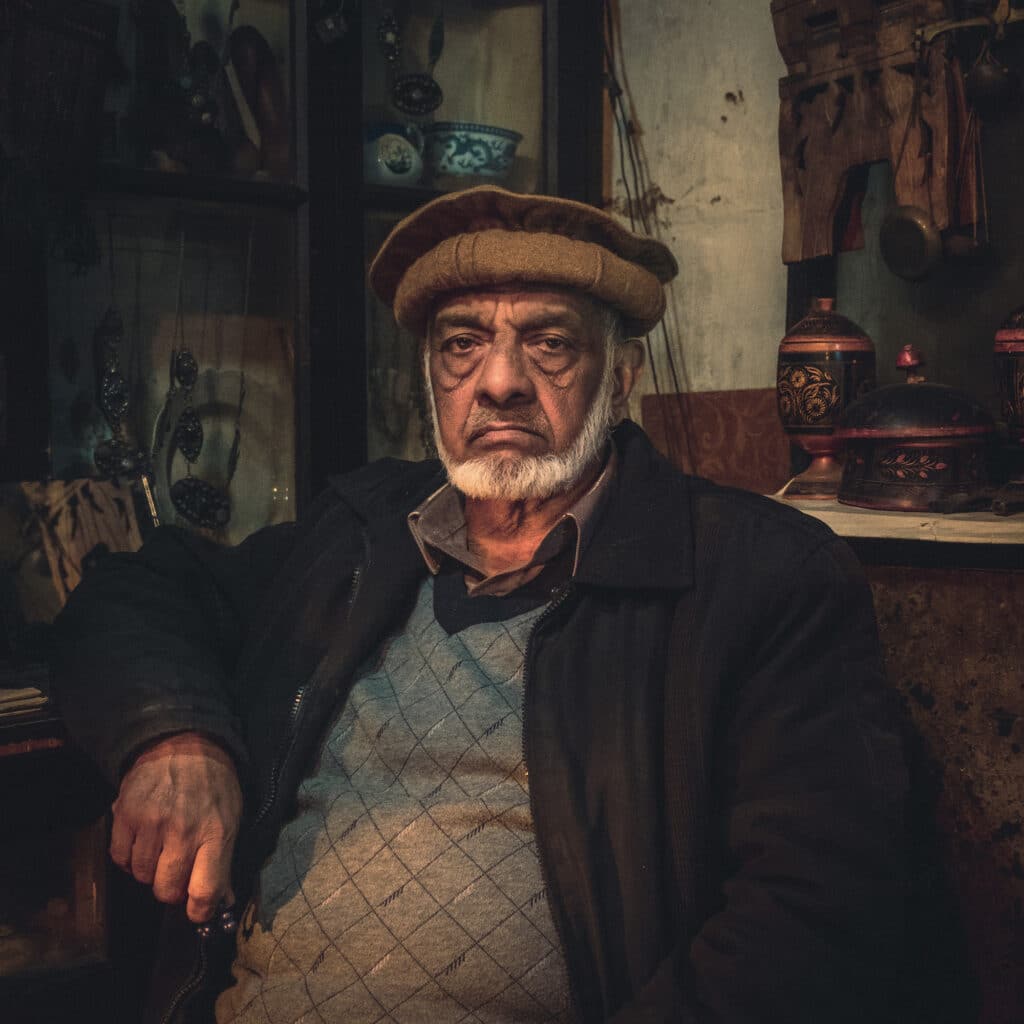
I explore Lahore’s labyrinthine old town, dotted with sumptuous monuments built by the Mughal and British empires. During my stay there, I never mention my true nationality. In April 2021, the French president relaunched the debate on the caricatures of the Prophet of Islam during a ceremony in tribute to Samuel Patty. Once the radical Islamist party TLP (Tehreek-e-Labbaik Pakistan) heard about it, the debate on blasphemy was reignited. Anti-French demonstrations shook the city for a few days, causing several deaths. The French are not liked there; thus, I am careful.
In vain, I try to strengthen my sense of direction in the crowded maze, but finally give up and lose myself in its tortuous guts. I take the pulse of its effervescent life by going to meet its citizens. An old truck driver with an angelic face in a parking lot. A group of chubby wrestlers on a wasteland. A Christ-looking vegetable seller. A fish-packaging company worker with an emotionless stare. All these people mark my visit to Lahore.
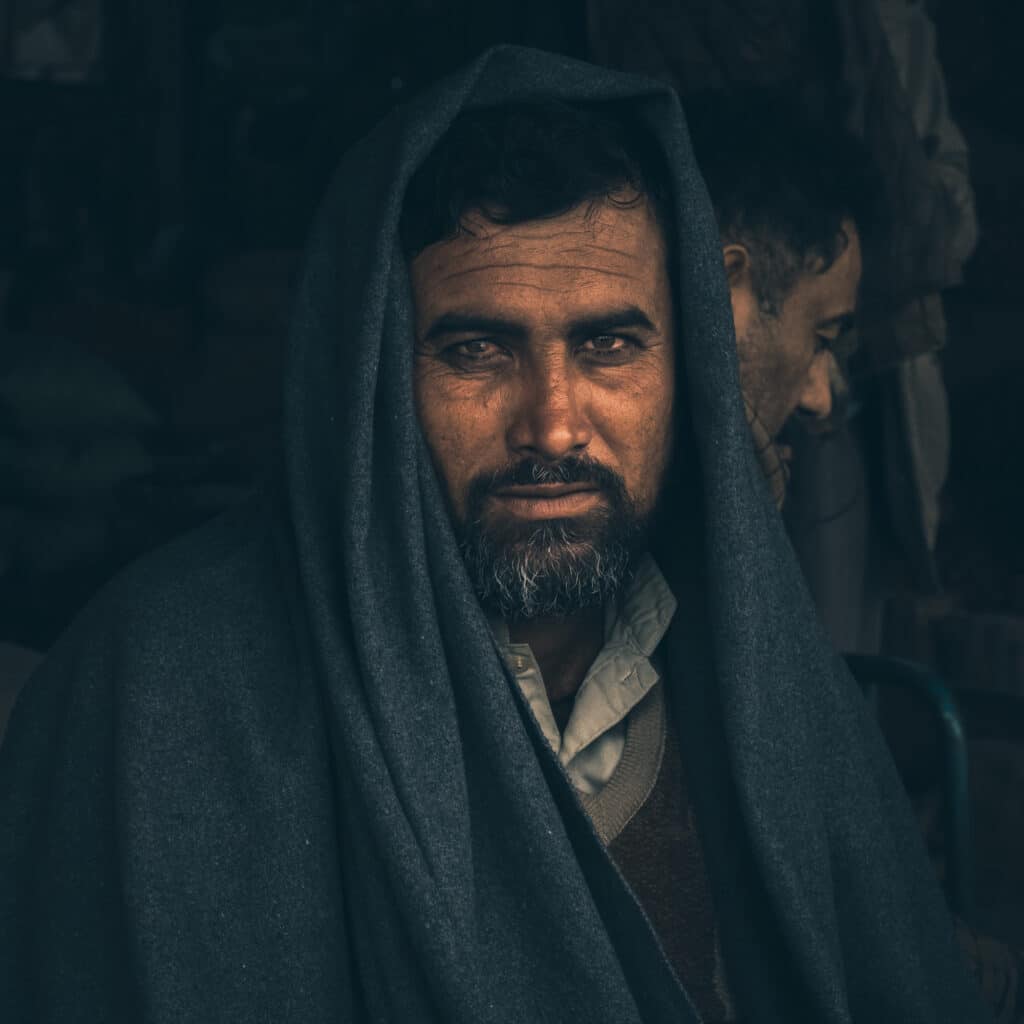
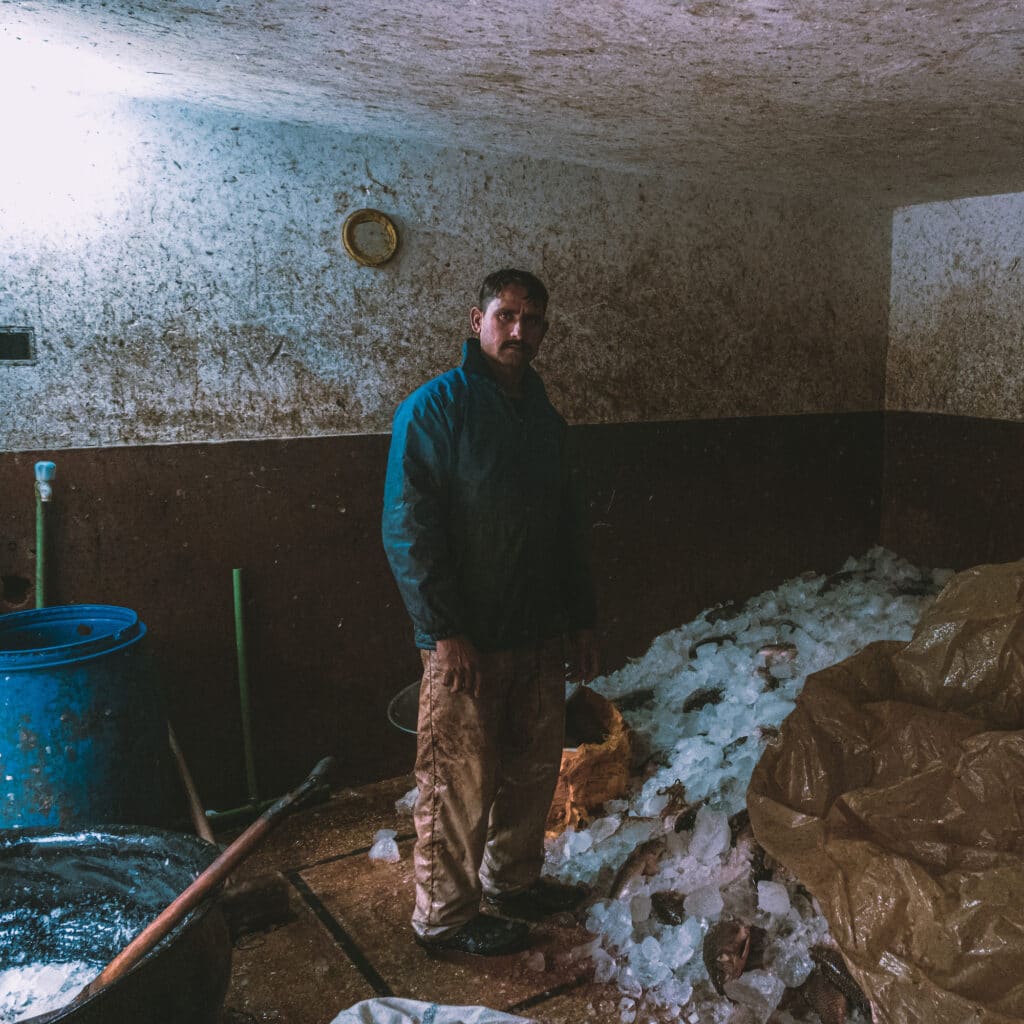
In search of light, I decide to go further south. On the outskirts of the Cholistan desert, I stop for a few days in the city of Multan, renowned for its incredible tombs of Sufi saints. There, I find out that I am prohibited from staying or moving around as I please by government officials. I am followed and can’t go out without an escort, so I explore the city with my personal guard. My contact with people is thus biased, immediately creating distance. Not ideal for picture-taking. I am unaware of it then, but that inconvenience will mark my daily routine almost until the end of my stay in the territory.
I also spend a few days in Bahawalpur, organizing trips to the surrounding areas, especially Uch Sharif, a small town built by Alexander the Great where the magnificent mausoleum of Bibi Jawindi, a Sufi saint, lies. I enter the mosque adjoining the entrance to the site. The walls and ceilings are finely decorated with mosaics and blue and white earthenware. As the muezzin recites the call to prayer, I take out my camera. I point my lens at a man standing in an alcove with his hands raised in prayer. He penetrates my lens with his gentle gaze, reaching deep into my soul. Driven by these encounters and nourished by the interactions, I realize that portraits naturally have an important place in my photography.
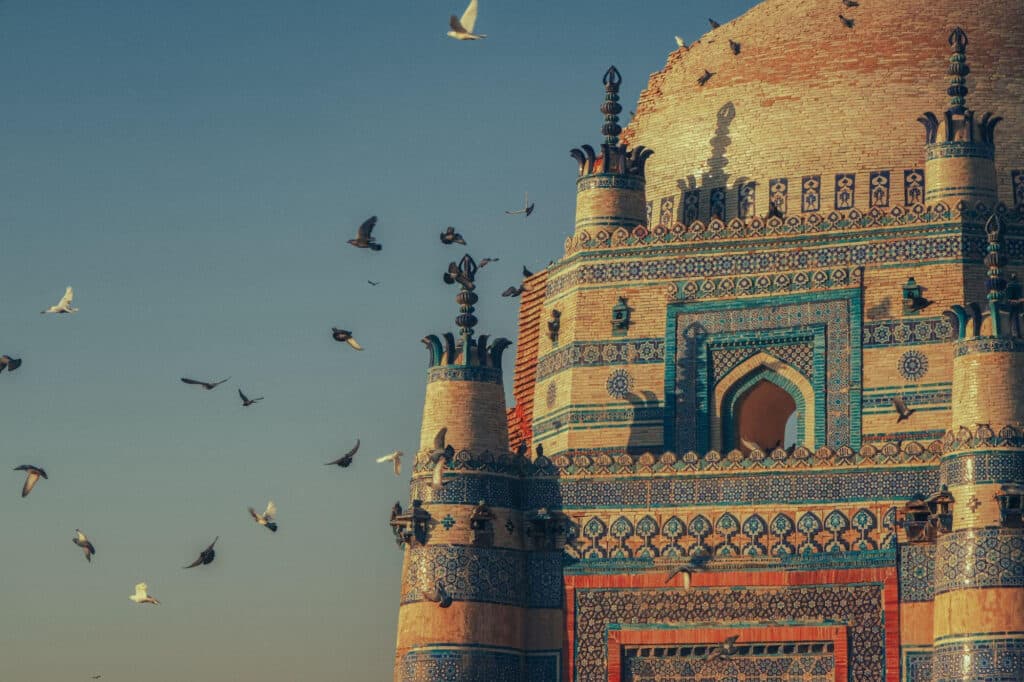
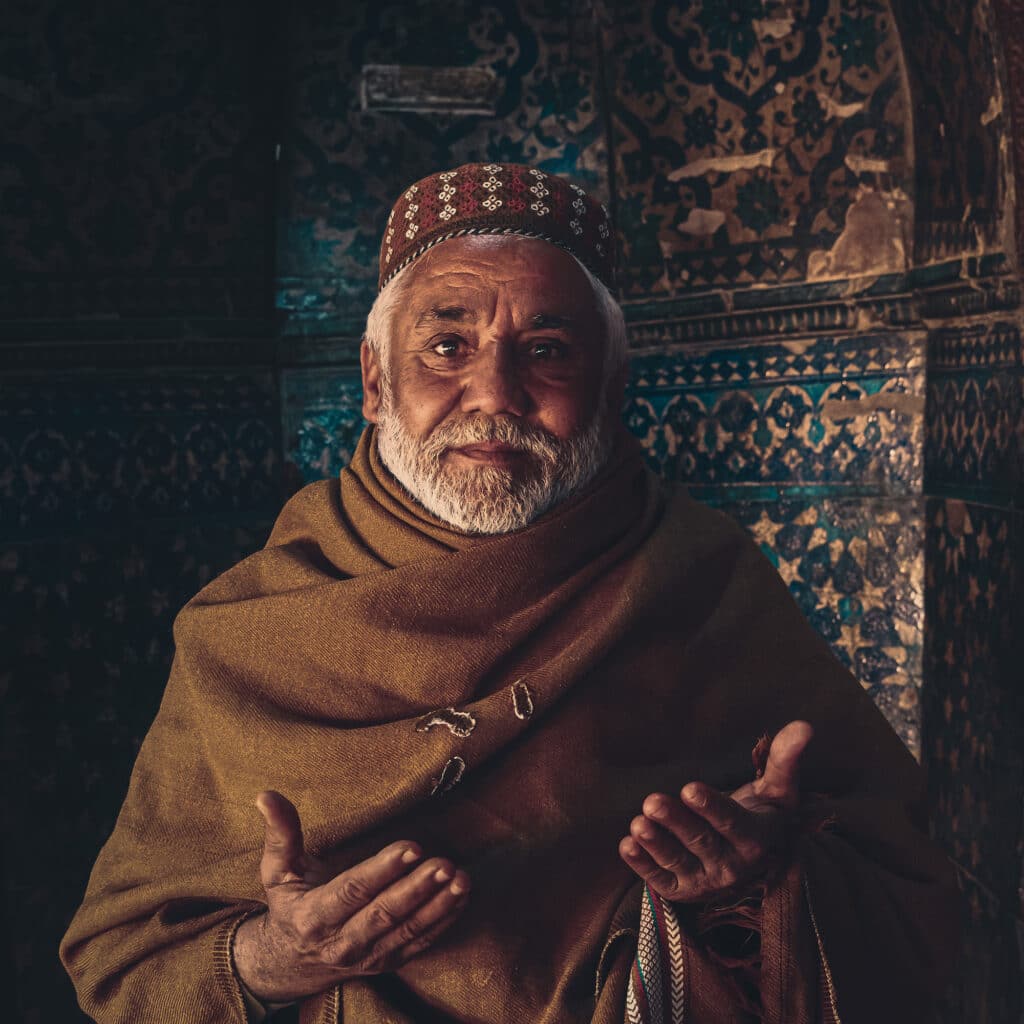
Before landing in Pakistan, I learned about an ancient people, the Mohana tribe, living on the largest lake in the country. I am fascinated by their story, and it is partly thanks to them that I end up there. The Mohanas, also known as the “lords of the seas” or “birdmen,” are the descendants of the first peoples of the Indus Valley who, as legend has it, are direct heirs of Noah. They live on their boats in lakeside villages and have preserved the traditions of their ancestors for almost 5000 years. I head towards Sehwan, the nearest town to Lake Manchar, without actually knowing where and how to find them.
Once I do, I feel the omnipresence of Sufism. The city has a high standing in this mystical branch of Islam. Later in the evening, I go to the enormous sanctuary of La’l Shahbâz Qalandar, where hundreds of devotees gather every evening to dance and spin to the rhythm of drums and flutes. To atone for their sins, crying women on their hands and knees headbang and swirl their long, shiny black hair as if possessed, concealed outside the limits of the holy spot. Considered heretics by extremist groups, Sufi communities are often the target of terrorist attacks. This sacred place was their victim in 2017. Eighty-eight people died in a suicide attack perpetrated by the Pakistani branch of Daesh.
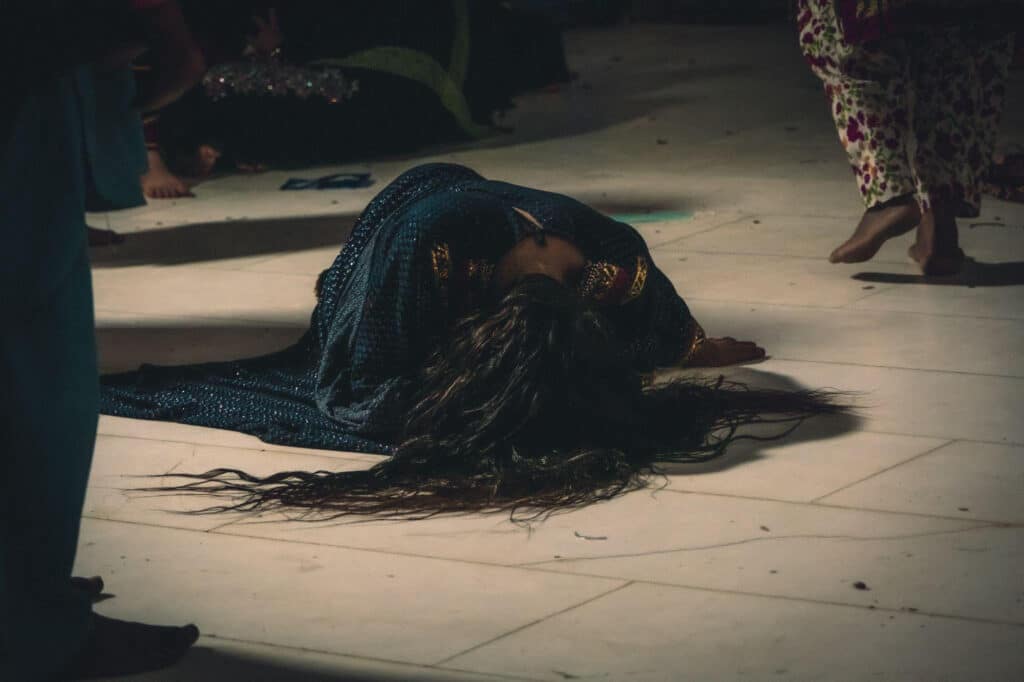
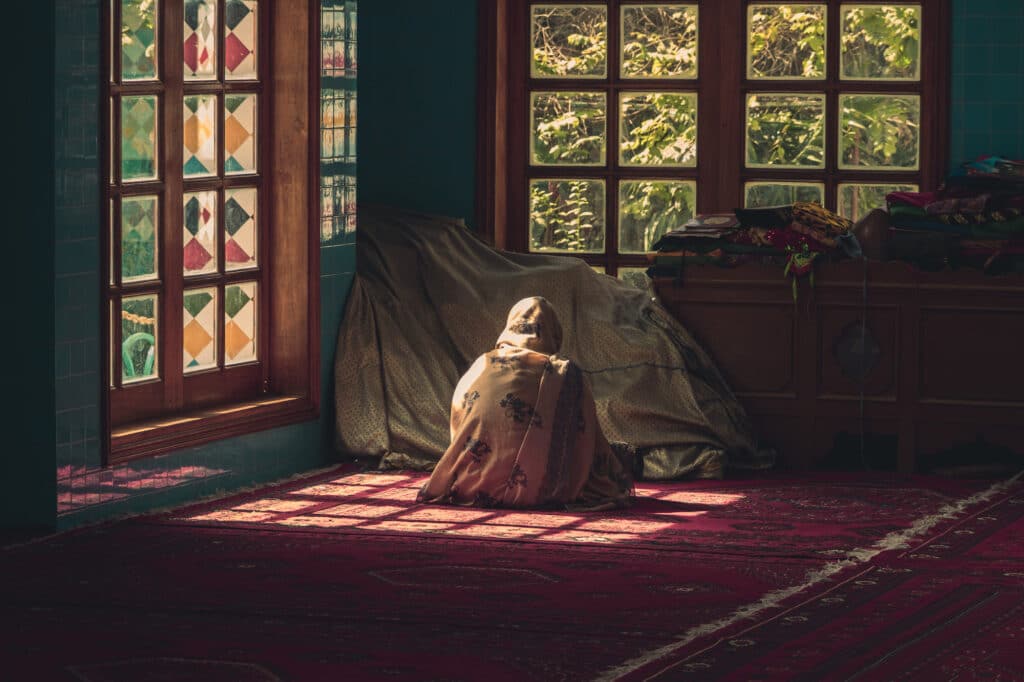
The following day, I explore the city with my elite guard. He turns out to be quite helpful and gets me into several remarkably decorated Sufi shrines—in particular, the tomb of Nadir Ali Shah. The lavishly ornamented ceiling, with its dizzying height, is strewn with thousands of reflective mosaics. I notice a woman praying discreetly in a corner, illuminated by an almost sacred light. I just stand there and look at her for several minutes.
I continue my search for the Mohana people, abandoned to their fate by the government on the vast 350km2 expanse of water. On Google Maps, near the southern shores of the lake, I see a few spots in the water, followed by white streaks indicating traces. Taking it as a hint, I decide to go there early in the morning the next day. On-site, on the outskirts of a small fishing village, the weather is foggy, swabbed by a soft fading light that obscures the horizon. From afar, the lake resembles an ocean. I approach a man about to get on a boat and ask him if he knows of any floating villages nearby. He points to another person whose portrait I take as I move toward him. We introduce ourselves. His name is Masjid and he is a member of the Mohana community. I have finally found them.
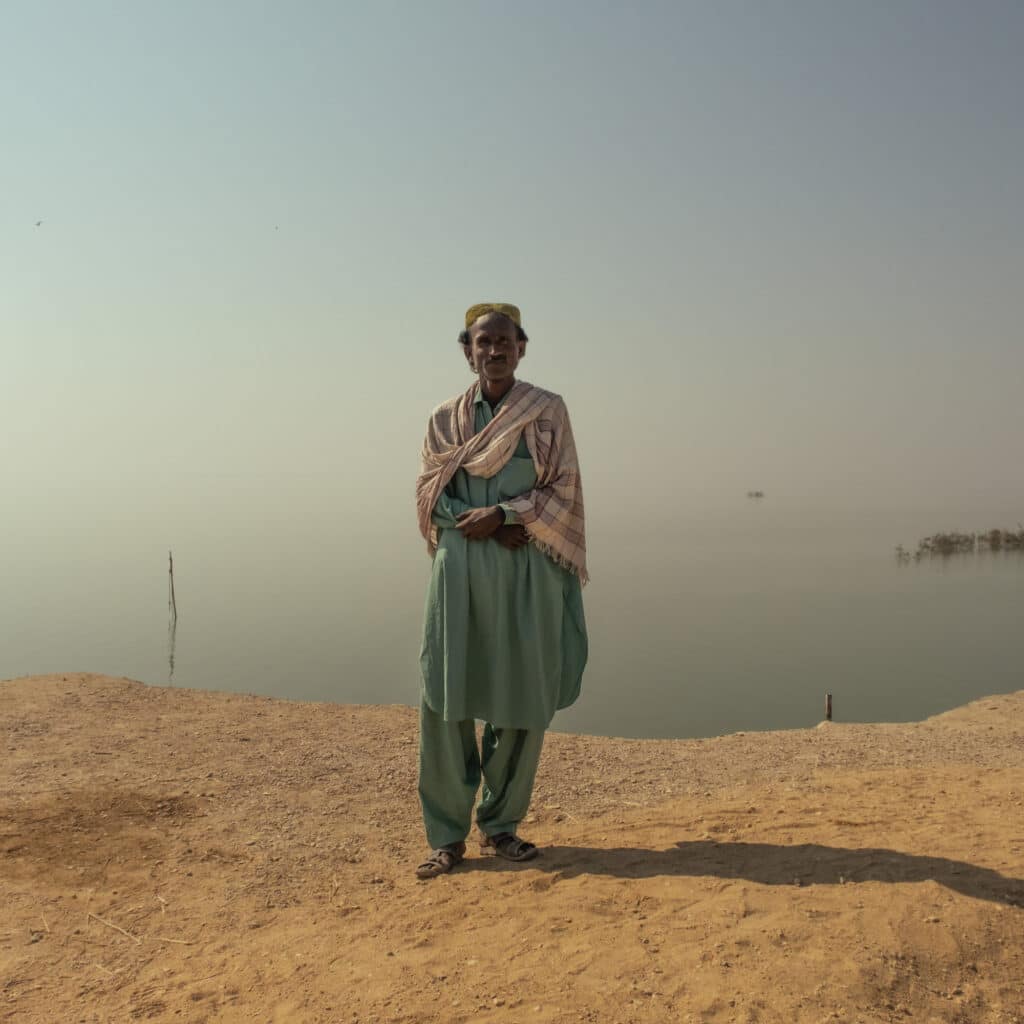
With the help of an interpreter, I explain my project to Masjid, who takes us on his boat to the surrounding area of his floating village and the bird breeding spot used for fishing. As I gather from our conversations, the Mohana live in extreme precariousness. Masjid’s community subsists solely on fishing and depends on an ecosystem that is gradually deteriorating before their eyes. The lake’s pollution and repeated droughts are lowering the water level, thus reducing the wildlife population. There are fewer fish, and the birds are flying off to purer waters with more fish. This situation prevents the Mohana from developing, and they have no prospect of possible change.
There is a unique atmosphere to the lake, with its unsettling light and colors. A group of children comes to greet us at the end of the day. They row from hut to hut on the lids of used fish crates. Their slow movements make time move sluggishly. These visions of another world make me think that with the changing climate, that could be our future too. Noah’s descendants indeed have things to teach us: that one day, we may have no choice but to live with our feet in the water.
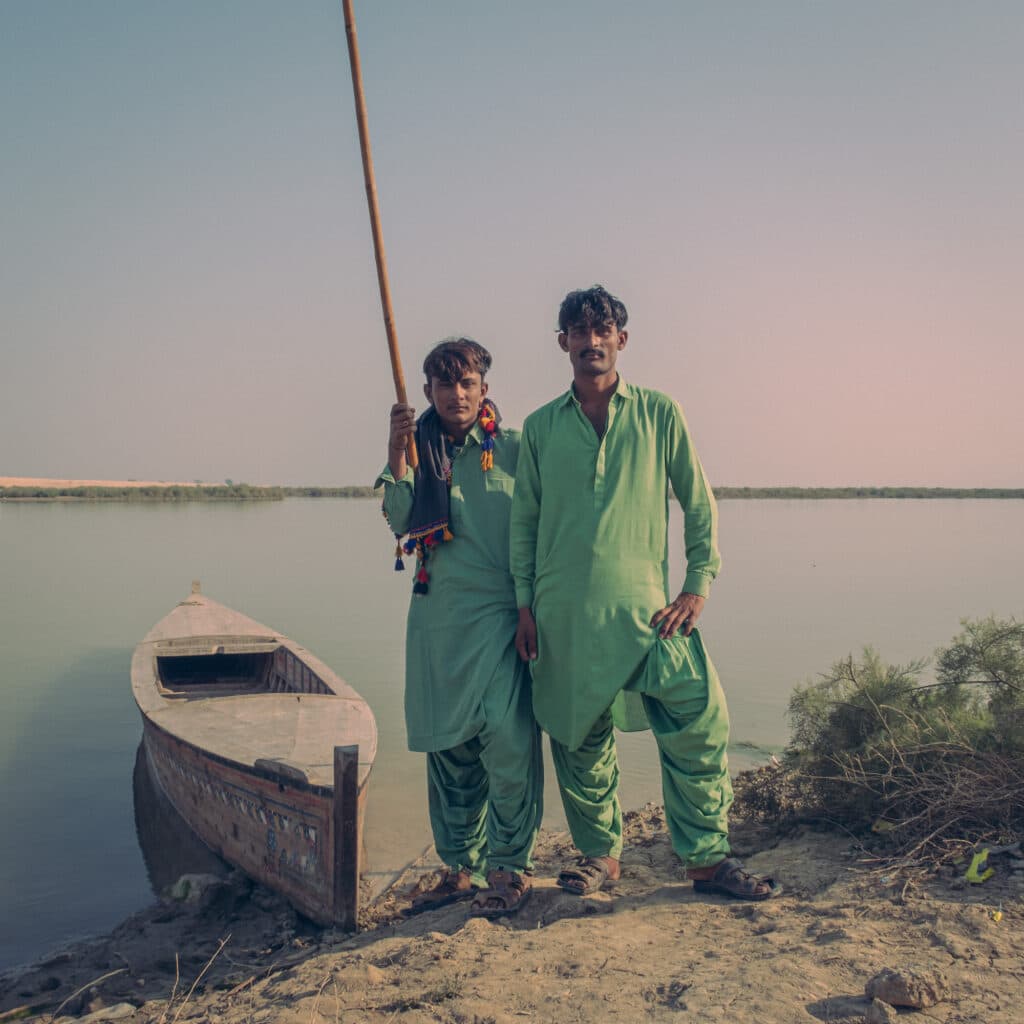
Marked by these water people’s history and tragic destiny, I head a little further south towards the Arabian Sea with a head full of ideas, desires, and projects. In my small damp room in Karachi, waiting for my return flight, I recall the three months spent crisscrossing the tracks of the “land of the pure,” as the Pakistani call it (in Urdu). I arrived here as a virgin of all photographic practices, without expecting conclusive results. But I leave with a series, a prize, and reports in preparation. My newborn passion for photography, stories lived and heard, and my encounters have developed my urge to pursue my quest for authentic images and stories.

